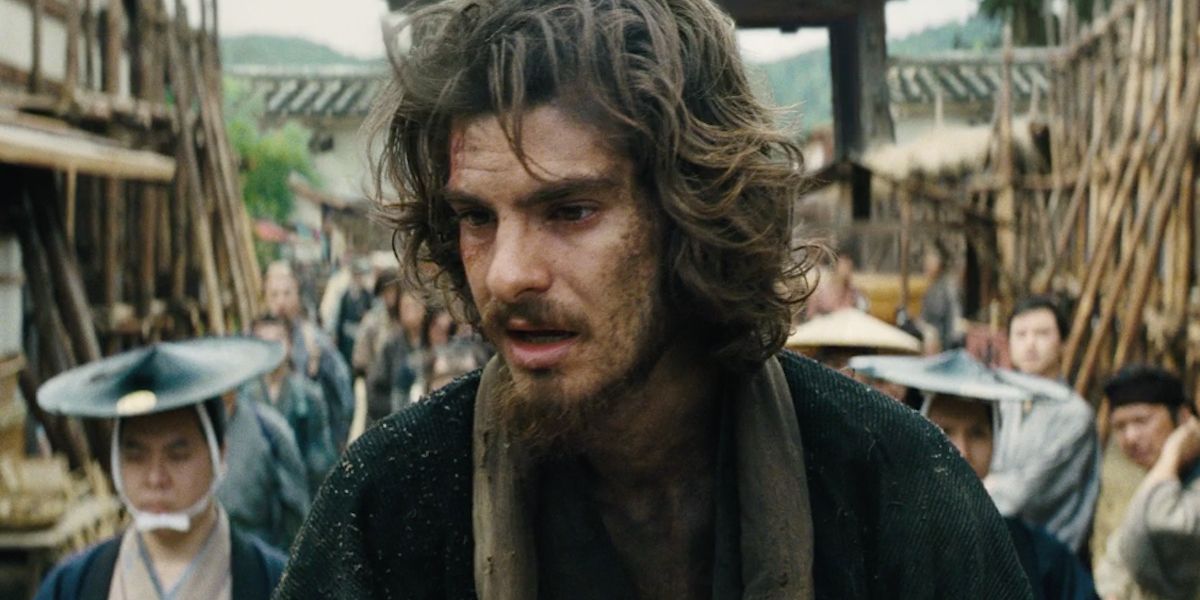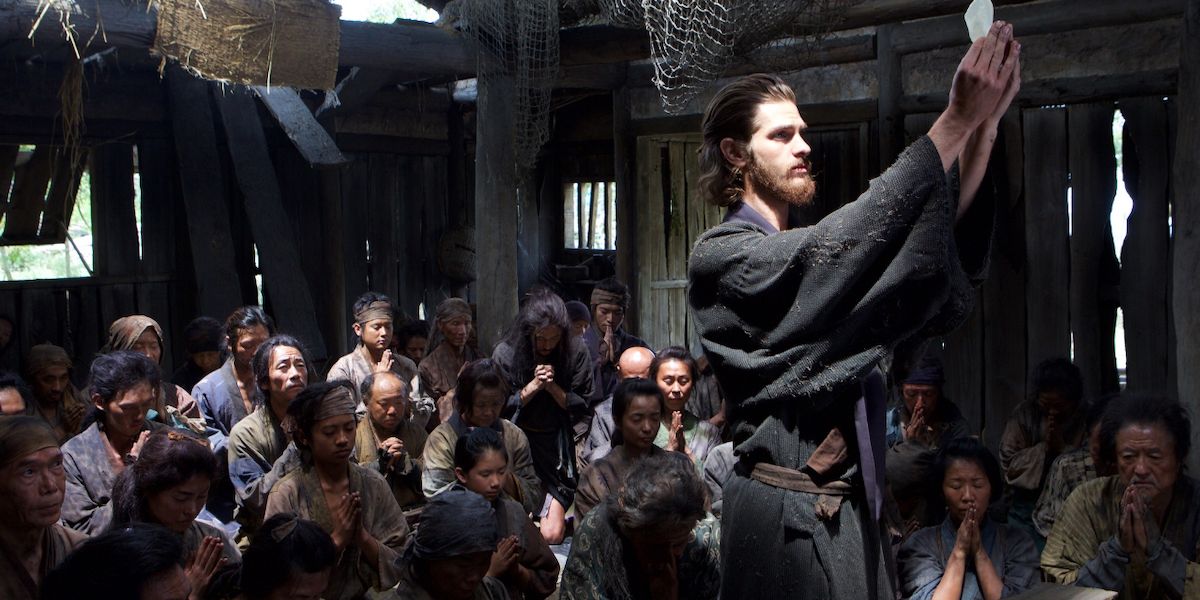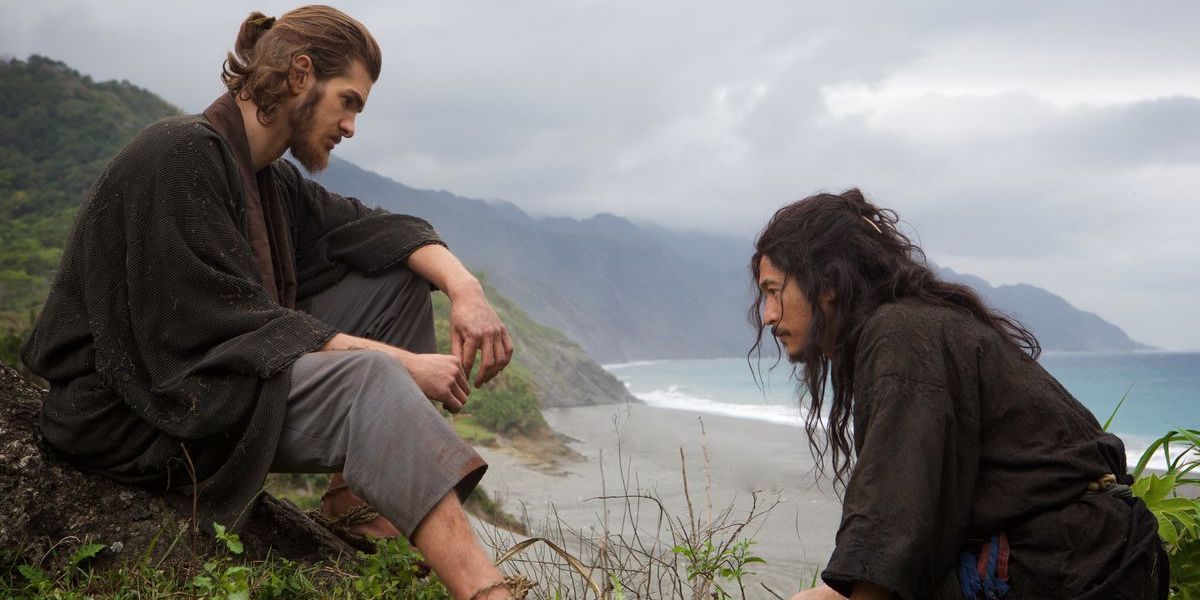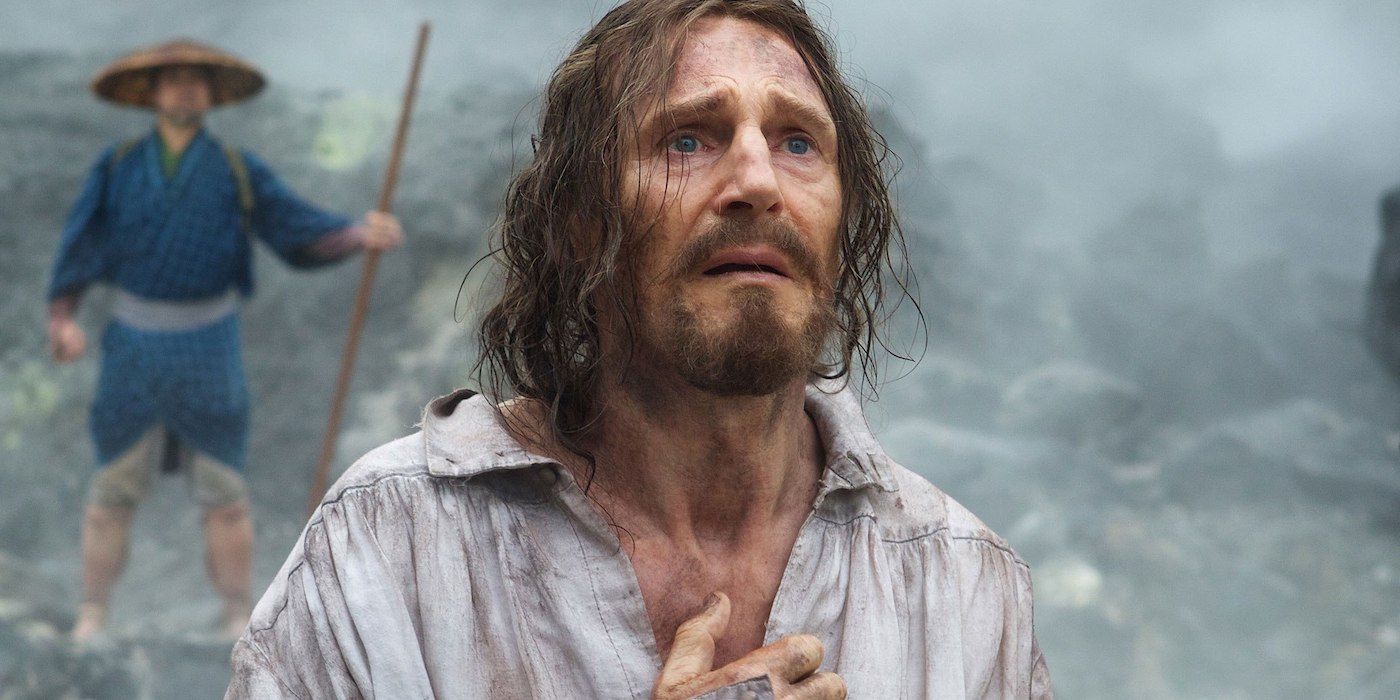The Big Picture
- Martin Scorsese’s Silence is an underrated work sandwiched between The Wolf of Wall Street and The Irishman.
- Based on a Japanese novel, the film explores the 17th-century journey of two missionaries through brutal persecution in Japan.
- Despite delays and a small release, Silence is a visually stunning, emotionally intense, and thought-provoking exploration of faith.
Fans of Martin Scorsese often refer to 2019’s The Irishman as his directorial follow-up to 2013’s The Wolf of Wall Street. While that chronology may be true for Scorsese’s signature crime filmography, he actually came out with another movie between the two. We are not talking about a short, documentary, or a project that Scorsese simply served as executive producer on like The Current War or Uncut Gems. The movie that arrived between The Wolf of Wall Street and The Irishman is the full-length feature, Silence, and it just may be Scorsese’s most underrated work.
What Is Martin Scorsese’s ‘Silence’ About?
Based on Shūsaku Endō‘s 1966 Japanese novel of the same name, Martin Scorsese’s Silence stars Andrew Garfield and Adam Driver as 17th-century Portuguese missionaries Sebastião Rodrigues and Francisco Garupe, respectively. After learning that their mentor, Cristóvão Ferreira (Liam Neeson) renounced his faith during a Catholic mission in Japan, the two young priests set off to find him and continue spreading the word of the Gospel.
True to history, Rodrigues and Garupe arrive in Japan during the post-Shimabara Rebellion Edo period, where anyone known to be practicing Christianity is subject to torture and death. The priests do their work covertly, assisted by underground Christian populations who are hiding from the government’s Inquisitors. Their hiding, however, can only last so long. As they bear witness to more and more horrendous persecution, their faith is shaken, and they come to understand how Ferreira lost his along the way.
How Did Martin Scorsese’s ‘Silence’ Get Made?
Silence was a longtime passion project of Scorsese’s. Allegedly, development took over a quarter-century, and he first proposed adapting Endō’s novel in 1990— two years after the release of his other religious-centered film, The Last Temptation of Christ. Pre-production began for the first time in the late nineties, but Martin Scorsese postponed the project to make Bringing Out The Dead, Gangs of New York, and The Aviator first. Nearly ten years later, Scorsese put Silence on the back burner again to make The Departed, Shutter Island, Hugo, and eventually, The Wolf of Wall Street. These perpetual delays nearly led to a lawsuit, as Silence‘s once-prospective production company Cecchi Gori Pictures claimed Scorsese owned them backend fees for the delays. Scorsese denied the claims and the matter was settled out of court.
Following The Wolf of Wall Street, Silence finally began filming in 2015, with a screenplay by longtime Scorsese collaborator Jay Cocks. Taiwanese locations stood in for Japan, and though weather, climate, and a fatal accident involving a collapsed studio ceiling set the production back, filming wrapped after three and a half months. Paramount acquired the film’s distribution rights well in advance, and it premiered in late 2016, making it into theaters around the world by early 2017.
What Works in Martin Scorsese’s ‘Silence’?
Despite the long development and delays, Silence is one of Scorsese’s boldest and most epic works. The film is deliberately paced, building a slow, yet invigorating intensity across a 161-minute runtime. Though movies that hit close to the three-hour mark are almost a Scorsese staple at this point, Silence maintains interest across this lofty runtime without many of the pop-culture references, camera tricks, or classic rock soundtracks that buoy films like The Wolf of Wall Street, Goodfellas, or Casino.
While period pieces are nothing novel for Scorsese, Silence does not settle itself in early to mid-twentieth century America. Instead, it takes its viewers to the 1600s, placing them at a point and place in history that most Western audiences are likely unfamiliar with. Part of the successful transport is thanks to director of photography Rodrigo Prieto, who earned the film its sole Academy Award nomination, as well as set director Dante Ferretti. Together, they beautifully built and captured the pre-modern setting, filled with old architecture and breathtaking sweeps of the Asian Pacific coast. It’s a long way from the digitized sets of Hugo or the hazy barrooms of Mean Streets. In fact, it’s probably the Scorsese film with the most sublime natural imagery, and therefore one of his most aesthetically remarkable.
Above all else, though, it is Silence‘s story and message that makes it unforgettable. The film is an expansive epic, an adventure of the highest intensity, and a psychological study of faith. At times, it feels emulative of Schindler’s List, Come and See, or Hotel Rwanda for its unflinching depictions of real-world political brutality. The conflict and horrors that the film explores are vast in scale, and yet Scorsese manages to personalize it all with a particular focus on Andrew Garfield’s Sebastião Rodrigues. As Rodrigues sees the atrocities against his fellow Catholics in Japan, he questions the role of the church, the purpose of his mission, and even the presence of God. It is a meditation on faith, but never one that feels preachy or didactic—just painstakingly honest.
Why Did ‘Silence’ Fail at the Box Office?
Silence received high praise from critics upon its release, becoming one of the American Film Institute’s Top-10 films of the year. However, it bombed at the box office, hardly making back half of its $46 million budget. Moviegoers still tend to overlook it, and it remains an underseen entry in Scorsese’s long filmography.
Many factors could contribute to Silence‘s underappreciated value. Often in cinema, long and tumultuous development processes are indicative of subpar products. While this was certainly not the case for Silence, all of the delays might have deterred viewers from going to see it before it was even released. Then, the release itself was rather atypical. Though the movie is not a “Christian film,” it did have its world premiere at the Pontifical Oriental Institute, a Catholic education institution in Rome attached to the Vatican. This might have sent some mixed signals.
More likely, however, it was the esoteric subject matter and the lack of strong marketing that hindered Silence‘s financial success. Though the unique setting, heavy themes, and long runtime are ultimately some of Silence‘s strengths, they probably didn’t have the same attraction value as some of Scorsese’s more bombastic pictures. The movie doesn’t have Leonardo DiCaprio in a slick suit, relatable music from the 1960s, or even contemporary cityscapes that could all work to a marketing team’s advantage. It doesn’t even have Scorsese’s signature mob movie iconography. What it had was a stellar cast in 17th-century garb, intentionally unstylish hair and makeup, and a story about Catholic missionaries. Even with the director’s famed name attached, these details don’t exactly promise the same sexiness as a Jordan Belfort or Howard Hughes biopic.
On top of that, Paramount decided to give Silence a very small theatrical release at the end of 2016 for Oscar eligibility, before opening it up to a wider (but still relatively limited) release at the start of the following year. With just the two Roman premieres preceding this and no film festival rollout, Silence had an unconventional release itinerary, and there was little room for widescale marketing. Come March of 2017, the movie was already out on home video.
Nevertheless, Silence remains one of Scorsese’s most singular works for all the best reasons. It is ambitious, original, and aesthetically brilliant. A work of art through and through, it is the kind of film that forces its audience to think deeply about the human spirit and question its dark limits. As we gear up for Killers of the Flower Moon next month, this modern Scorsese masterpiece is well worth the watch.
#Time #Forgot #Martin #Scorseses #Underrated #Movie #Starring #Andrew #Garfield




